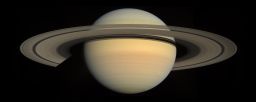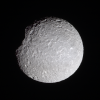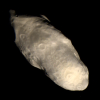Emily Lakdawalla • Dec 31, 2009
Planetary Society Advent Calendar for December 31: Uranus
Did you think I was going to skip Uranus? How could I? I keep coming back to Uranus as one of my favorite places in the solar system, because there's so much to see there, yet it's been so little explored and is quite likely to remain so. Until we visit it again, we do the best with what we have, which is the images from Voyager 2. Björn Jónsson created this view of Uranus using pretty much the same steps as he used to create the view of Neptune that I posted earlier, which means you can put the two pictures next to each other to compare their colors.

Here's that side-by-side comparison.

Really, they are very, very similar. We don't have one blue-green world and one blue one, as the two are so often depicted. They're pretty much the same methane blue; Uranus just had more high haze, making it whiter (not greener) than Neptune. Now that the Uranian equinox is past and atmospheric circulation is producing storms I'll bet they'd look even more similar from up close.
Uranus is not quite the end of my calendar series; there'll be one final post tomorrow. Happy New Year to all!
Each day in December I'm posting a new global shot of a solar system body, processed by an amateur. Go to the blog homepage to open the most recent door in the planetary advent calendar!
Support our core enterprises
Your support powers our mission to explore worlds, find life, and defend Earth. You make all the difference when you make a gift. Give today!
Donate

 Explore Worlds
Explore Worlds Find Life
Find Life Defend Earth
Defend Earth
































